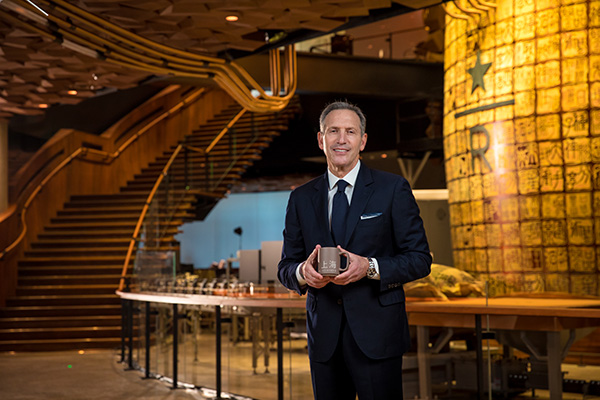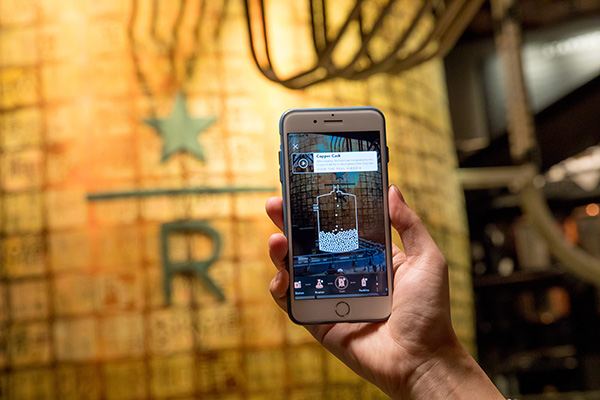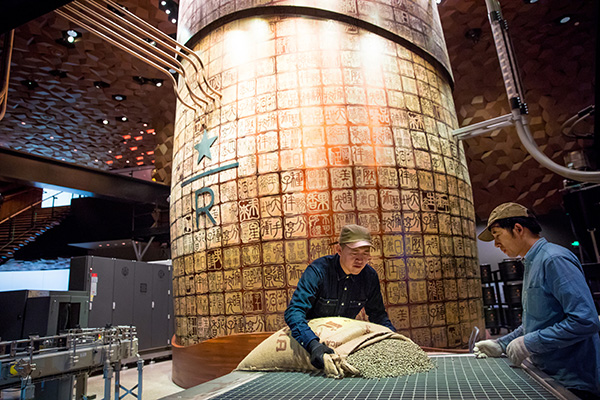Starbucks Reserve Roastery in Shanghai opens this week, the second to debut globally after the flagship location in Seattle. The concept boasts an experiential mix of cafe, bakery and coffee manufacturing on site.
China is the coffee behemoth’s fastest-growing market with more than 3,000 stores across 136 cities. There are more than 600 stores in Shanghai alone, the largest number of stories in any city in which the chain has a presence.
 Starbucks Founder Howard Schulz in front of the two-story copper cask.
Starbucks Founder Howard Schulz in front of the two-story copper cask.
As customers enter the Roastery and step through the front doors of the 30,000 square-foot building, they see a two-story copper cask adorned with more than 1,000 hand-engraved traditional Chinese chops, or stamps, that serve to narrate the story of Starbucks and coffee. The dramatic ceiling consists of 10,000 handmade wooden hexagon-shaped tiles that draw inspiration from the locking of an espresso shot on an espresso machine.
Customers can visit several attractions within, including one of three coffee bars offering multiple brewing methods, order specially-crafted teas at Teavana tea bar, or indulge in artisanal bakery goods by Rocco Princi.

The store includes a strong tech component as well. Guests can use their mobile devices at various points to access an augmented reality component that provides more information to the guest, including online ordering and retail.
Chinese artisans handcrafted the three wooden coffee bars, including one that measures 88 feet long making it the longest at any Starbucks. These bars reference the unique roasting curve of individual coffee beans, executing the Roastery’s design vision of Liz Muller, senior vice president of creative global design for Starbucks.

Starbucks will roast small-lot reserve coffee on site. This includes coffees Starbucks sources from more than 30 countries around the world, including coffee from China’s Yunnan Province. Customers watch the green beans roast before they eventually travel through copper pipes to silos at the coffee bars, where customers can enjoy a fresh cup of coffee, or to the in-house pack line, where staff package the beans for distribution to other Starbucks Reserve stores in China.
